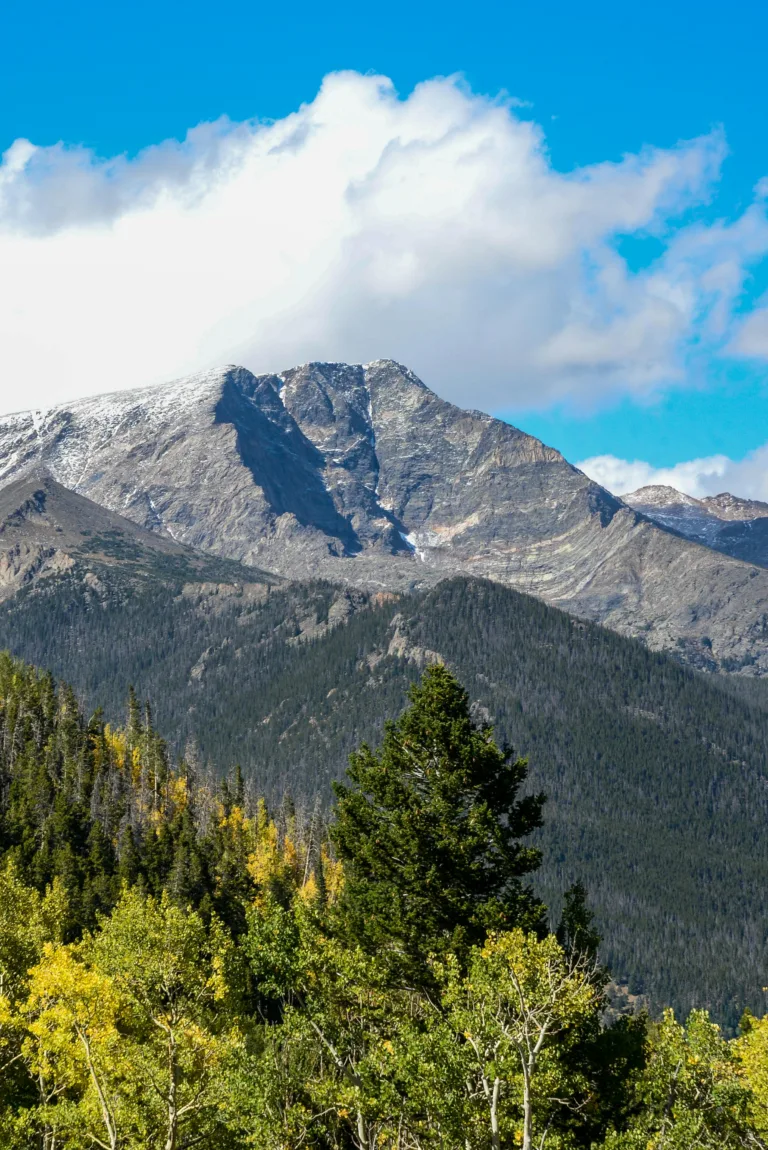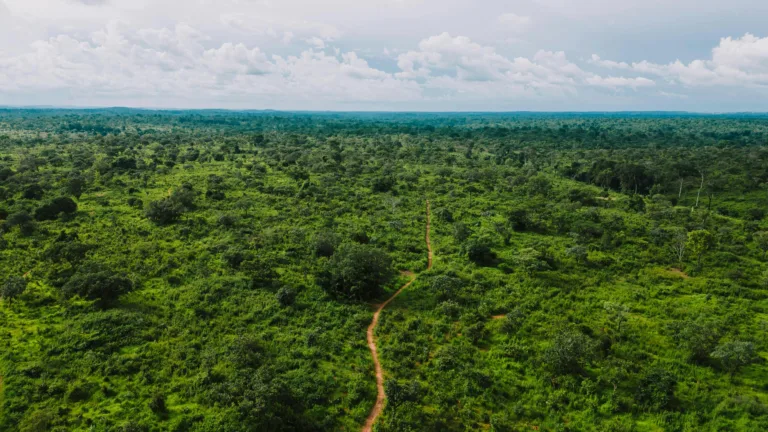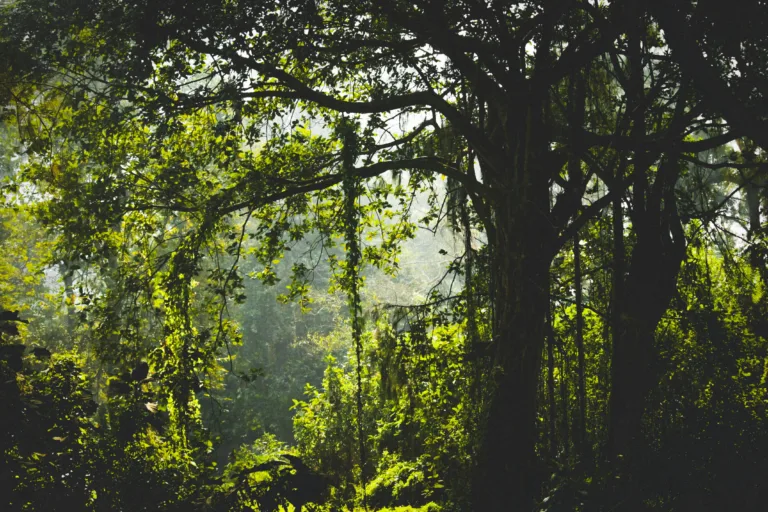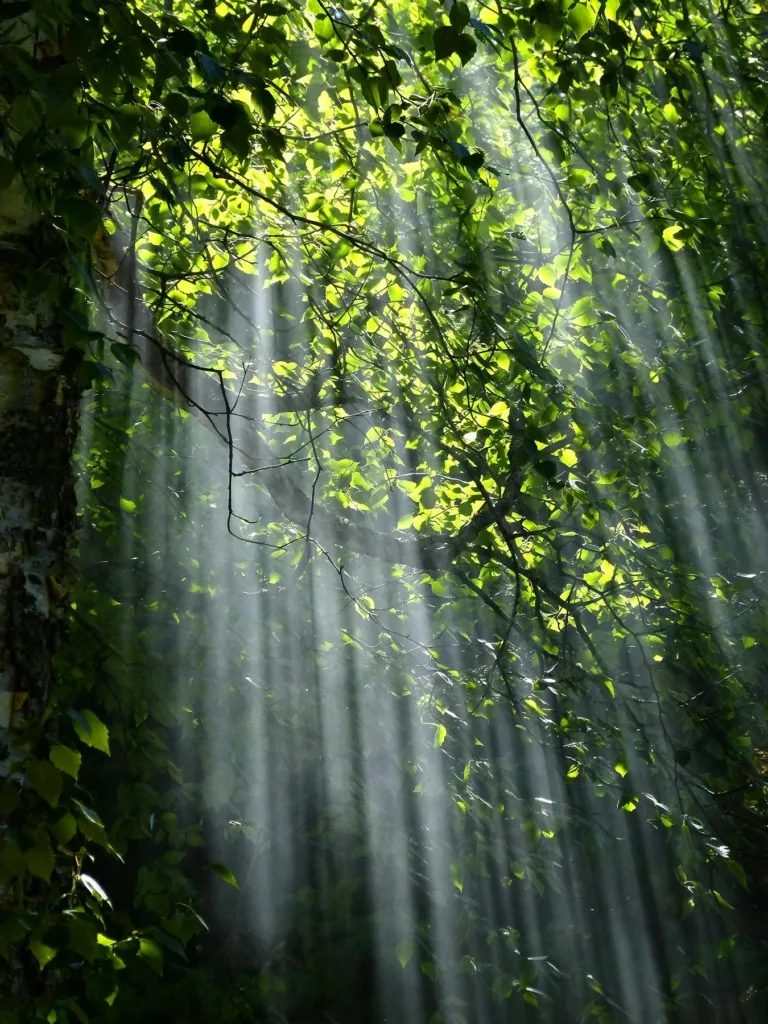The top 10 countries with the largest forest area are:
1.Russia
2.Brazil
3.Canada
4.United States
5.China
6.Democratic Republic of the Congo (DRC)
7.Australia
8.Indonesia
9.India
10.Peru
1.Russia
Forest area:8,450,487.791 sq.km
Russia is the country with the largest forest area in the world.
Global Proportion: This vast area accounts for roughly 20% of the world’s total forested area, making Russia the largest forested country globally.
Percentage of Land Area: Around 49-51% of Russia’s total land area is covered by forests.
Environmental Importance
- Carbon Sequestration: Russian forests play a vital role in absorbing carbon dioxide from the atmosphere, helping to mitigate global climate change.
- Oxygen Production: Often referred to as the “lungs of the Earth,” Russian forests contribute significantly to global oxygen production.
- Biodiversity Conservation: These forests provide critical habitats for numerous plant and animal species, many of which are endemic or threatened.
Economic Importance
- Timber Production: Russia is a major producer of timber and wood products, which are important to the national economy.
- Non-Timber Products: In addition to timber, Russian forests provide other valuable resources such as berries, mushrooms, and medicinal plants.
Challenges and Conservation
- Deforestation: Illegal logging, forest fires, industrial development, and climate change pose significant threats to Russian forests.
- Conservation Efforts: Russia has established numerous protected areas, national parks, and reserves to conserve its forest ecosystems. Sustainable forest management practices are promoted to balance economic use with environmental conservation.
Ecological Role
- Water Cycle Regulation: Forests play a crucial role in regulating the water cycle, influencing precipitation patterns, and maintaining hydrological balance.
- Climate Regulation: The vast forested areas in Russia help stabilize the climate by storing large amounts of carbon and regulating temperatures.

2.Brazil
Forest area:5,256,557.164 sq.km
Brazil is the second country with the largest forest areas in the world. It is renowned for its vast and biodiverse forests, particularly the Amazon rainforest.
Global Proportion: This makes up around 12% of the world’s total forested area, placing Brazil among the top countries in terms of forest area.
Environmental Importance
- Carbon Sequestration: Brazilian forests, particularly the Amazon, are crucial for absorbing carbon dioxide from the atmosphere, thus playing a key role in mitigating climate change.
- Biodiversity Conservation: Brazil’s forests are critical for global biodiversity, housing countless species of plants, animals, and insects.
Economic Importance
- Timber and Non-Timber Products: Brazil’s forests provide valuable resources, including timber, rubber, nuts, and medicinal plants.
- Agriculture: The clearing of forests for agriculture, particularly for cattle ranching and soy production, is a major economic activity, though it poses significant environmental challenges.
Challenges and Conservation
- Deforestation: Illegal logging, agricultural expansion, mining, and infrastructure development are major causes of deforestation in Brazil.
- Fires: Forest fires, both natural and human induced, pose significant threats to forest health.
- Conservation Efforts: Brazil has established numerous protected areas and national parks. There are also international efforts and agreements aimed at preserving the Amazon and other critical ecosystems.
- Sustainable Practices: Initiatives to promote sustainable forestry and agriculture are essential to balance economic development with environmental conservation.
Ecological Role
- Water Cycle Regulation: Brazilian forests play a crucial role in regulating the water cycle, influencing regional and global precipitation patterns.
- Climate Regulation: The Amazon rainforest, in particular, helps regulate the global climate by storing large amounts of carbon and releasing oxygen.

3.Canada
Forest area:3,426,487.451 sq.km
Canada is the third country with the largest forest areas in the world. Its extensive forests play a critical role in the global ecosystem and have significant environmental, economic, and cultural importance.
Global Proportion: Canada has about 9% of the world’s total forested area, making it one of the top countries in terms of forest area.
Environmental Importance
- Carbon Sequestration: Canada’s forests are critical for absorbing carbon dioxide from the atmosphere, helping to mitigate climate change.
- Oxygen Production: These forests contribute significantly to global oxygen production.
- Biodiversity: Canada’s forests provide habitat for a wide range of plant and animal species, many of which are endemic or threatened.
Economic Importance
- Timber Industry: Canada is one of the world’s largest producers of timber and wood products, with the forestry sector being a key part of the national economy.
- Non-Timber Products: The forests also provide other valuable resources such as berries, mushrooms, and medicinal plants.
- Recreation and Tourism: Forests in Canada are important for recreation and tourism, offering activities like hiking, camping, and wildlife viewing.
Challenges and Conservation
- Deforestation and Degradation: Threats include logging, mining, oil and gas extraction, and climate change.
- Forest Fires: Wildfires are a natural part of the forest ecosystem but can be exacerbated by human activities and climate change.
- Conservation Efforts: Canada has established numerous national parks, protected areas, and forest management practices aimed at sustainable use and conservation.
- Sustainable Forestry: The country promotes sustainable forestry practices to balance economic interests with environmental protection.
Ecological Role
- Water Cycle Regulation: Forests play a vital role in regulating the water cycle, influencing precipitation patterns, and maintaining hydrological balance.
- Climate Regulation: The vast forested areas help stabilize the climate by storing large amounts of carbon and regulating temperatures.
- Soil Conservation: Forests help prevent soil erosion and maintain soil health.

4.United States
Forest area:3,173,720.996 sq.km
The United States is the fourth country with the largest forest areas in the world. Its diverse forested regions contribute significantly to the country’s ecology, economy, and environmental health.
Global Proportion: The U.S. accounts for about 8% of the world’s total forested area, making it one of the top countries in terms of forest area.
Environmental Importance
- Oxygen Production: These forests contribute to global oxygen production.
- Biodiversity: U.S. forests provide habitats for a diverse array of wildlife, including many endemic and threatened species.
Economic Importance
- Timber Industry: The United States is a leading producer of timber and wood products, with the forestry sector being an important part of the economy.
- Non-Timber Products: Forests also provide resources such as nuts, berries, mushrooms, and medicinal plants.
- Recreation and Tourism: Forested areas offer recreational opportunities such as hiking, camping, and wildlife viewing, contributing to the tourism industry.
Challenges and Conservation
- Deforestation and Degradation: Threats include logging, urban development, agriculture, and climate change.
- Forest Fires: Wildfires are a natural part of many forest ecosystems but have increased in frequency and intensity due to climate change and human activities.
- Conservation Efforts: The U.S. has established numerous national parks, forests, and protected areas to conserve its forest ecosystems. Sustainable forest management practices are promoted to balance economic use with environmental conservation.
- Reforestation Initiatives: Efforts to restore degraded forests and increase forest cover are ongoing.
Ecological Role
- Water Cycle Regulation: Forests play a crucial role in regulating the water cycle, influencing precipitation patterns, and maintaining water quality.
- Climate Regulation: The vast forested areas help stabilize the climate by storing large amounts of carbon and regulating temperatures.
- Soil Conservation: Forests help prevent soil erosion and maintain soil health.

5.China
Forest area:2,100,915.088 sq.km
China is the fifth country with significant forest areas. Over the past few decades, China has made substantial efforts to expand and preserve its forests cover.
Global Proportion: This constitutes about 5% of the world’s total forested area, making China one of the top countries in terms of forest area.
Environmental Importance
- Carbon Sequestration: China’s forests play a critical role in absorbing carbon dioxide from the atmosphere, helping to mitigate climate change.
- Oxygen Production: These forests contribute significantly to oxygen production and improving air quality.
- Biodiversity: Chinese forests are home to a rich diversity of plant and animal species, including endangered species like the giant panda, South China tiger, and red panda.
Economic Importance
- Timber and Non-Timber Products: Forests provide timber, bamboo, medicinal plants, and other non-timber forest products which are vital for local economies.
- Economic Development: Forestry is an important sector for economic development in many rural areas, providing jobs and supporting livelihoods.
- Recreation and Tourism: Forests in China also offer recreational opportunities and support a growing tourism industry, attracting visitors to natural parks and scenic areas.
Challenges and Conservation
- Desertification: Northern regions, particularly around the Gobi Desert, face significant challenges with desertification, impacting forest areas.
- Forest Fires: Natural and human induced fires pose a threat to forest ecosystems.
Conservation Efforts
- Afforestation and Reforestation Programs: China has undertaken massive tree planting campaigns, such as the “Great Green Wall” project aimed at combating desertification and increasing forest cover.
- Protected Areas: The establishment of national parks, nature reserves, and forest parks to conserve biodiversity and protect forest ecosystems.
- Sustainable Forest Management: Promoting practices that balance economic use with the conservation of forest resources.
- International Cooperation: Participation in global environmental initiatives and agreements to protect forests and combat climate change.
Ecological Role
- Water Cycle Regulation: Forests play a vital role in regulating the water cycle, influencing precipitation patterns, and maintaining water quality.
- Climate Regulation: The vast forested areas help stabilize the climate by storing large amounts of carbon and regulating temperatures.
- Soil Conservation: Forests help prevent soil erosion, especially in mountainous and hilly regions, and maintain soil health.

6.Democratic Republic of the Congo (DRC)
Forest area:1,581,668.504 sq.km
the Democratic Republic of Congo (DRC) is the sixth country with the largest forest areas in the world. The DRC is home to a significant portion of the Congo Basin, which is the second largest tropical rainforest in the world after the Amazon.
Global Proportion: The DRC accounts for about 10% of the world’s tropical forests, making it one of the top countries in terms of forest area.
Types of Forests in the DRC
Tropical Rainforests
- Congo Basin: The majority of the DRC’s forests are part of the Congo Basin, which is characterized by dense, moist tropical rainforest.
- Tree Species: Includes species such as mahogany, ebony, and many types of hardwoods.
Swamp Forests
- Location: Found in the central and northern parts of the DRC.
- Characteristics: These forests are seasonally or permanently flooded, creating unique ecosystems.
Montane Forests
- Location: Found in the eastern highlands, including the Albertine Rift.
- Biodiversity: These forests are rich in biodiversity, including many endemic species.
Environmental Importance
- Carbon Sequestration: The DRC’s forests play a crucial role in absorbing carbon dioxide, helping to mitigate global climate change.
- Oxygen Production: These forests contribute significantly to global oxygen production.
- Biodiversity: The DRC’s forests are home to a vast array of biodiversity, including endangered species such as gorillas, chimpanzees, forest elephants, and okapis.
Economic Importance
- Timber and Non-Timber Products: The forests provide valuable timber and non-timber products, such as fruits, nuts, medicinal plants, and bushmeat.
- Economic Activities: Forestry is a key economic activity, although much of it is conducted informally or illegally, posing challenges for sustainable management.
- Livelihoods: Millions of people depend on the forests for their livelihoods, including food, shelter, and income.
Challenges and Conservation
- Deforestation and Degradation: Significant threats include illegal logging, slash and burn agriculture, mining, and infrastructure development.
- Conflict and Governance: Political instability and conflict in the region have exacerbated forest degradation and hindered conservation efforts.
- Forest Fires: Both natural and human induced fires pose risks to forest ecosystems.
Conservation Efforts
- Protected Areas: The DRC has established numerous national parks and protected areas to conserve its forests and biodiversity, such as Virunga National Park and Salonga National Park.
- International Support: Many international organizations and initiatives are involved in conservation efforts, providing funding and technical assistance.
- Sustainable Management: Efforts to promote sustainable forest management practices aim to balance economic use with conservation
Cultural and Social Importance
- Indigenous Communities: Many indigenous communities live in the DRC’s forests and have traditional knowledge and practices that are integral to the sustainable management of these ecosystems.
- Cultural Heritage: The forests hold significant cultural and spiritual value for various ethnic groups within the DRC.

7.Australia
Forest area:1,242,495.678 sq.km
Australia is the seventh country with significant forested areas. Its diverse range of forests plays an important role in the country’s ecology, economy, and cultural heritage.
Global Proportion: This constitutes about 3% of the world’s forested area, making Australia one of the countries with significant forest areas.
Types of Forests in Australia
Eucalypt Forests
- Dominance: Eucalypt forests are the most common type of forest in Australia, covering about 75% of the forested area.
- Tree Species: Dominated by various species of eucalyptus, these forests are adapted to a range of climates and conditions.
- Distribution: Found throughout the country, particularly in the eastern and southern regions.
Rainforests
- Location: Mainly found in the northeastern region of Queensland, as well as some parts of New South Wales and Tasmania.
- Biodiversity: These forests are rich in biodiversity, hosting a wide range of plant and animal species.
- Types: Include tropical, subtropical, and temperate rainforests.
Acacia Forests
- Tree Species: Dominated by various species of acacia (wattle).
- Distribution: Found across the continent, especially in semi-arid and arid regions.
Melaleuca Forests
- Tree Species: Dominated by species of the genus Melaleuca (paperbark).
- Distribution: Common in coastal areas and wetlands, particularly in northern Australia.
Casuarina Forests
- Tree Species: Dominated by species of the genus Casuarina (she-oak).
- Distribution: Found in a range of environments, including coastal and riverine areas.
Economic Importance
- Timber Industry: The forestry sector is a significant part of the Australian economy, providing timber and wood products.
- Non-Timber Products: Forests also provide valuable non-timber products such as honey, essential oils, and bushfoods.
- Recreation and Tourism: Forested areas offer recreational opportunities and attract tourists for activities such as hiking, camping, and wildlife viewing.
Challenges and Conservation
- Deforestation and Degradation: Major threats include land clearing for agriculture, urban development, and mining.
- Forest Fires: Australia is prone to bushfires, which can have devastating impacts on forests, wildlife, and human communities.
- Climate Change: Changing climate patterns pose significant challenges to forest health and resilience.
Conservation Efforts
- Protected Areas: Australia has established numerous national parks, reserves, and protected areas to conserve its forests and biodiversity.
- Sustainable Forestry: Efforts to promote sustainable forestry practices aim to balance economic use with environmental conservation.
- Reforestation and Restoration: Initiatives to restore degraded forests and increase forest cover are ongoing, often involving community participation and indigenous knowledge.
Cultural and Social Importance
- Indigenous Communities: Many indigenous communities in Australia have a deep connection to the forests, with traditional knowledge and practices that are integral to the sustainable management of these ecosystems.
- Cultural Heritage: Forests hold significant cultural and spiritual value for various communities, contributing to Australia’s rich cultural heritage.

8.Indonesia
Forest area:977,439.793 sq.km
Indonesia is the eighth country with the largest forest areas in the world. It is renowned for its rich biodiversity and extensive tropical rainforests, which play a crucial role in the global environment.
Global Proportion: This constitutes about 2% of the world’s forested area, making Indonesia one of the countries with significant forest areas.
Types of Forests in Indonesia
Tropical Rainforests
- Location: Predominantly found on the islands of Sumatra, Borneo (Kalimantan) and Sulawesi.
- Tree Species: Includes a wide variety of species such as dipterocarps, fig trees, and mahogany.
- Biodiversity: These forests are among the most biologically diverse ecosystems on the planet.
Peat Swamp Forests
- Location: Common in lowland areas, particularly in Sumatra and Borneo.
- Characteristics: These forests are characterized by waterlogged soils and high levels of organic matter.
- Importance: They are critical for carbon storage, holding large amounts of carbon in the peat soil.
Mangrove Forests
- Location: Found along the coastlines, particularly in Sumatra, Kalimantan and Sulawesi.
- Tree Species: Includes various mangrove species such as Rhizophora and Avicennia.
- Role: These forests protect coastal areas from erosion and provide vital nursery habitats for marine life.
Environmental Importance
- Carbon Sequestration: Indonesia’s forests play a significant role in absorbing carbon dioxide, helping to mitigate climate change. The peat swamp forests are particularly important due to their large carbon stores.
- Oxygen Production: These forests contribute to global oxygen production.
- Biodiversity: Indonesia’s forests are home to an incredible variety of species, including orangutans, tigers, rhinoceroses, and countless plant species.
Economic Importance
- Timber and Non-Timber Products: The forestry sector is a major part of the Indonesian economy, providing timber, rattan, and other forest products.
- Palm Oil Plantations: Conversion of forest land to palm oil plantations is a significant economic activity but also a major driver of deforestation.
- Livelihoods: Millions of people depend on forests for their livelihoods, including indigenous communities and rural populations.
Challenges and Conservation
- Deforestation and Degradation: Major threats include illegal logging, agricultural expansion (especially palm oil and pulpwood plantations), mining, and infrastructure development.
- Forest Fires: Forest and peatland fires, often linked to land clearing practices, pose severe environmental and health risks.
- Biodiversity Loss: Habitat destruction threatens many species with extinction.
Conservation Efforts
- Protected Areas: Indonesia has established numerous national parks, wildlife reserves, and protected areas to conserve its forests and biodiversity, such as the Gunung Leuser National Park and Tanjung Puting National Park.
- Moratorium on New Forest Concessions: The government has implemented a moratorium on new logging and plantation concessions in primary forests and peatlands.
- Community-Based Forest Management: Initiatives to involve local communities in sustainable forest management and conservation efforts.
Cultural and Social Importance
- Indigenous Communities: Many indigenous communities live in Indonesia’s forests and have traditional knowledge and practices that are integral to the sustainable management of these ecosystems.
- Cultural Heritage: The forests hold significant cultural and spiritual value for various ethnic groups within Indonesia.

9.India
Forest area:727,718.926 sq.km
India is the ninth country with the largest forest areas in the world. It possesses significant forest cover that plays a crucial role in its biodiversity, climate regulation, and economy.
Types of Forests in India
Tropical Rainforests
- Location: Found in the northeastern states, the Western Ghats, and the Andaman and Nicobar Islands.
- Biodiversity: These forests are rich in species diversity, hosting many endemic plants and animals.
Tropical Deciduous Forests
- Types: Divided into moist and dry deciduous forests.
- Location: Moist deciduous forests are found in areas with moderate rainfall, like parts of the central and eastern regions. Dry deciduous forests are found in regions with less rainfall, like parts of central and southern India.
- Tree Species: Includes teak, sal, and various species of acacia.
Tropical Thorn Forests
- Location: Found in arid and semi arid regions such as Rajasthan, Gujarat, and parts of Haryana.
- Characteristics: These forests are characterized by hardy trees and shrubs adapted to dry conditions.
Montane Forests
- Location: Found in the Himalayan region and the Western Ghats.
- Types: Includes sub tropical, temperate, and alpine forests.
- Tree Species: Includes species such as oak, pine, and rhododendron.
Mangrove Forests
- Location: Found in coastal regions, especially the Sundarbans in West Bengal and the Andaman and Nicobar Islands.
- Importance: These forests protect coastlines from erosion and provide critical habitats for marine and bird life.
Environmental Importance
- Carbon Sequestration: Indian forests play a significant role in absorbing carbon dioxide, helping to mitigate climate change.
- Oxygen Production: These forests contribute to global oxygen production and improving air quality.
- Biodiversity: India’s forests are home to a vast array of biodiversity, including many endangered species such as the Bengal tiger, Indian elephant, and one-horned rhinoceros.
Economic Importance
- Timber and Non-Timber Products: Forests provide timber, bamboo, fuelwood, and non-timber products like medicinal plants, fruits, and resins.
- Livelihoods: Millions of people, including many indigenous communities, depend on forests for their livelihoods.
- Agriculture: Forests support agricultural activities by maintaining soil fertility and water cycles.
Challenges and Conservation
- Deforestation and Degradation: Major threats include illegal logging, agricultural expansion, mining, and urbanization.
- Forest Fires: Both natural and human induced fires pose risks to forest ecosystems.
- Climate Change: Changing climate patterns impact forest health and biodiversity.
Conservation Efforts
- Protected Areas: India has established numerous national parks, wildlife sanctuaries, and biosphere reserves to conserve its forests and biodiversity, such as Jim Corbett National Park and the Sundarbans.
- Afforestation and Reforestation: Government initiatives like the Green India Mission aim to increase forest and tree cover.
- Community Forest Management: Programs involve local communities in sustainable forest management and conservation efforts.
Ecological Role
- Climate Regulation: The vast forested areas help stabilize the climate by storing large amounts of carbon and regulating temperatures.
- Soil Conservation: Forests help prevent soil erosion and maintain soil health, which is crucial for agriculture and local ecosystems.
Cultural and Social Importance
- Indigenous Communities: Many indigenous communities in India have a deep connection to the forests, with traditional knowledge and practices that are integral to the sustainable management of these ecosystems.
- Cultural Heritage: The forests hold significant cultural and spiritual value for various ethnic groups within India.

10.Peru
Forest area:684,387.017 sq.km
Peru is the tenth country with significant forest cover, particularly due to its portion of the Amazon rainforest.
Global Proportion: Peru is home to one of the largest portions of the Amazon rainforest, contributing significantly to the global forest area.
Types of Forests in Peru
Amazon Rainforest
- Location: Occupies the eastern part of Peru, extending into the Amazon Basin.
- Biodiversity: Rich in biodiversity, it hosts a vast array of plant and animal species, many of which are endemic.
- Tree Species: Includes a variety of hardwoods, such as mahogany and cedar.
Montane Forests
- Location: Found in the Andean mountain range.
- Characteristics: These forests vary with altitude and include cloud forests.
- Biodiversity: Highly diverse ecosystems with many unique species.
Dry Forests
- Location: Found in the coastal and northern regions of Peru.
- Characteristics: These forests are adapted to arid conditions and have unique flora and fauna.
Mangrove Forests
- Location: Found along the northern coast of Peru.
- Importance: These forests protect coastal areas and provide critical habitats for marine and bird life.
Environmental Importance
- Carbon Sequestration: Peru’s forests play a crucial role in absorbing carbon dioxide, helping to mitigate climate change.
- Oxygen Production: These forests contribute significantly to global oxygen production.
- Biodiversity: Peru’s forests are among the most biologically diverse in the world, hosting numerous plant and animal species, including many that are endangered.
Economic Importance
- Timber and Non-Timber Products: The forests provide valuable timber and non-timber products such as fruits, nuts, medicinal plants, and rubber.
- Livelihoods: Many indigenous and local communities rely on forest resources for their livelihoods, including agriculture, hunting, and gathering.
- Tourism: Forests attract ecotourism, contributing to the economy by drawing visitors interested in biodiversity and natural beauty.
Challenges and Conservation
- Deforestation and Degradation: Major threats include illegal logging, agriculture expansion, mining, and infrastructure development.
- Forest Fires: Both natural and human induced fires pose risks to forest ecosystems.
- Climate Change: Changing climate patterns impact forest health and biodiversity.
Conservation Efforts
- Protected Areas: Peru has established numerous national parks, reserves, and protected areas to conserve its forests and biodiversity, such as Manu National Park and Tambopata National Reserve.
- Sustainable Forestry: Efforts to promote sustainable forestry practices aim to balance economic use with environmental conservation.
- Indigenous Land Rights: Strengthening the land rights of indigenous communities to ensure their role in forest conservation.
Ecological Role
- Climate Regulation: The vast forested areas help stabilize the climate by storing large amounts of carbon and regulating temperatures.
- Soil Conservation: Forests help prevent soil erosion and maintain soil health, which is crucial for agriculture and local ecosystems.

